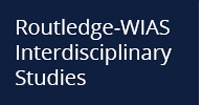Territoriality and the Internet ― Their Difficult Relationship
My research area is IT law. With the spread of the use of the Internet, the environment surrounding legal matters has become more complicated. The architecture of the Internet is designed as a decentralized network, appearing in a sense detached from territorial assignment. In other words, activities on the Internet can transcend the boundaries of nation-states. By contrast, considering the regulation of such conducts, the applicable legal framework is still mainly based on the “principle of territoriality”. This means that each nation-state can determine and declare the extent of its own sovereignty and jurisdiction. I particularly focus on this discrepancy between traditional thinking of territorially limited national law and the Internet as a potentially borderless sphere.
Private Law and Its Application to a Tort Case Involving Multiple National Systems
In order to rule a case which touches multiple national regimes, in private law, each state has legal rules to decide whether its civil courts have jurisdiction to decide on a case and which law should be applied. In EU law and Japanese law, which are categorized as traditional continental law, the first step of determining jurisdiction is stipulated by “international civil procedure law”. Then, as the second step, civil courts having jurisdiction need to decide which law to apply. This process of determining an applicable law is called “characterization” or “qualification”, which is provided by “private international law”.
It is important to understand that although international civil procedure law and private international law have the word “international” in their names, these laws are national law. Based on the principle of territoriality, every nation-state provides for its own conflict rules, which are potentially different from other states’. In the meanwhile, unification or harmonization of laws above the nation-state level has been achieved in the EU by the Brussels Regulation Regime as well as the Rome Regulation for private international law.
Traditionally, in continental law, one of the key concepts of private international law is that a case should be governed by the law which has the closest connection to the case. This thinking goes back to the German lawyer Savigny, who, by his interpretation of Roman law, connected legal relationships to a local place (Sitz).Therefore, in the process of characterization, so-called “connecting factors” are applied. They might be for example the citizenship of the plaintiff or the defendant, their residences, the place where the related property is situated, or the place where the accident happened or the damage occurred. For instance, in tort cases, cases which result in legal liability arising from an act that causes someone else to suffer loss or harm, the connecting factor traditionally has been so-called the “locus delicti”, interpreted as the place of conduct or the place of effect.
Let me give an example case.
B damaged A’s car in car accident. A is French citizen, B is Spanish citizen, and both of them reside in the U.K. The place where the accident occurred is Germany. Now, A demands compensation for his damaged car as repair costs.
This is a simple case, but it involves several national systems.
About jurisdiction over such a tort case, the EU’s Brussels Ia Regulation provides that “the courts for the place where the harmful event occurred or may occur” would have special jurisdiction over the case. Accordingly, in our example case, German civil courts would have jurisdiction to decide the case. As for the applicable law, the EU’s Rome II Regulation stipulates that “the law of the country in which the damage occurs” shall apply. Consequently, German law is applicable to the example case.
For a case of this kind, it might still seem reasonable to be regulated by the legal system, which is based on the principle of territoriality and applies connecting factors like the place of conduct or the place of effect.
The Challenges in Cases of Defamation and Copyright Infringement on the Internet
Now, let’s go one step further and take a look at a case related to the Internet.
B is German citizen and resides in Germany. During a week-end-trip to France, he uploads defamatory statements relating to A. The website where B uploads is hosted by a U.S. company. A is Japanese citizen and lives in Japan. The website is accessible from anywhere in the world through the Internet. A demands compensation for defamation from B.
This special kind of tort case also potentially touches multiple countries. However, unlike the case of the car accident, in which it might still seem easy to locate the place where it happened and where it caused the damage, defamation cases on the Internet are not so easily located.
Here the problem of the place of effect as the connecting factor is that it could be located potentially anywhere because the website is accessible from all over the world. Therefore, A would be able to sue B in any country, choosing favorable jurisdiction as well as the most favorable law.
Another problem is, if the connecting factor of the place of conduct would be applied, it would generally lead to the place where B uploaded. By this standard, he could limit his risk by uploading from a country with, from his point of view, favorable law.
In order to solve these problems, several solutions have been proposed and developed. One of these is that nation-states have established special rules for defamation cases, in which the place of residence of the infringer is often used as an additional connecting factor. As another measure, the European Court of Justice has developed its famous “Mosaic Theory” which divides optional jurisdictions over several Member States according to or following the damage.
If the example case above would be modified to the situation that B uploaded a song composed by A instead of defamatory statements, it would turn into a case of copyright infringement on the Internet, and the legal considerations of the case are even more challenging. In general, copyright as an intellectual property right is created by national law of each country based on a strong perception of territoriality. With regard to the selection of the applicable law, generally the law of the country for whose territory protection is sought applies (lex loci protectionis). Therefore, content creators might go to court of any country where they think their copyright is protected. Now we can see the problem because one upload means the potential violation of countless national copyright laws, so an infringer faces the potential risk to be sued in any country.
Building a Bridge between Private Law and Public Law
The problems I introduced above are discussed in the area of private international law, and my research started from these points of view. However, similar problems also exist in the area of public law, starting from the general principle of territoriality and leading to the questions of the Internet regulation by means of administrative law.
One interesting example of the Internet-related regulation is the extra-territorial application of administrative regulatory regimes. The new General Data Protection Regulation in the EU claims its applicability even towards data controllers not established in the Union in case the processing activities are related to the offering of goods or services to data subjects in the Union or the monitoring of their behavior is taking place within the Union.
In the meanwhile, public law has some conceptional differences from private law. First of all, administrative law, in principle, is traditionally based on the vertical relationship between the state and private citizens, while private law centers on the horizontal relationship between private persons. Furthermore, public law does not provide for an organized system of conflict rules, which is different from the area of private international law.
Another problem is the question of enforcement. Enforcement of laws is fundamentally related to territoriality. This is especially true for administrative law because the nation-state’s sovereign power is the basis of law enforcement in the vertical relationships between the state and individuals. On the other hand, in the area of private law, many states provide for legal rules for the recognition and enforcement of foreign judgments in their civil procedure law, which is often based on international treaties.
I think we should not take the difficulties stemming from those conceptual differences as insurmountable, but rather as a chance to learn a lot of concepts invented in the area of private international law in order to solve the problems in the area of administrative law, and vice versa.
Research Using the Method of Comparative Law
So as to find reasonable ways of regulating activities on the Internet, key questions of my research are the following: how can jurisdiction be determined and how can any law of a nation-state be applied in an information network that is potentially borderless and difficult to be assigned to one national sphere? How can we handle the alleged discrepancies between territorial and extra-territorial application? Which territorial sphere may a regulation be assigned to and why? And how parallel and different are the questions raised in the area of administrative law to those in the area of private international law?
I am pursuing these questions basically by working on comparative law, analyzing approaches in different legal systems. Comparing different approaches and concepts offers a chance to consider whether those national regulations are compatible with each other in order to build up dogmatic and conceptional solutions for the sake of regulating conducts on the Internet.
Interview and Composition:Mariko Oshio
In cooperation with: Waseda University Graduate School of Political Science J-School










